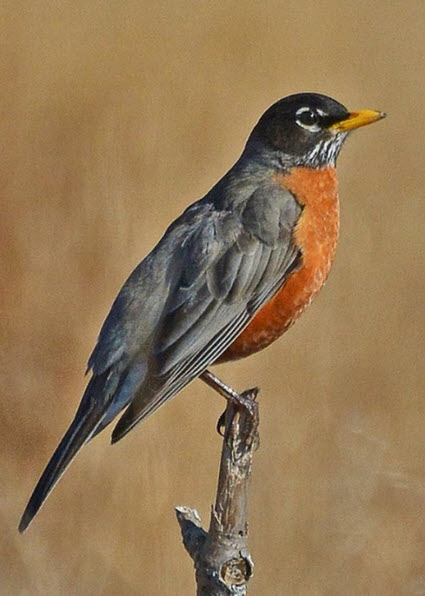Rural Perspectives: Robins—Our harbinger of spring

American Robins: Theirs is the first bird song heard in the morning and the last heard in the evening. Photo credit: Diane Constable
by Diane Constable
The American Robin (Turdus migratorius) is our most popular songbird, and the official State Bird of Michigan and two other states. Their sweet melody is the first bird song heard in the morning and the last heard in the evening.
The males come back to their nesting grounds by early April to find and defend a favored territory. The female arrives a couple of weeks later to pick a spot to nest. A place among tree or shrub branches, preferably 5 to 25 feet off the ground fits the bill, but sometimes she will find a nice ledge or platform. She uses twigs, grasses and mud for nest building. The 3 to 5 sky-blue eggs are incubated for about 14 days.
When hatched, both parents feed the chicks. The fledglings leave the nest after about two weeks and live on the ground for another two weeks while the parents protect and feed them. So if you see baby robins on the ground, please do not move them.
Robins are often seen running on lawns, stopping and starting in their search for earthworms. They use sight and sound to find the worms and will eat up to 18 feet of worms a day. Robins also like various insects, fruits, and berries—often preferring bug-infested berries. Because of their eating habits, they are vulnerable to certain lawn and garden chemicals.
To attract more robins, try planting some of their favorite fruited garden shrubs—such as viburnums, dogwood, or serviceberry—and trees like crab apple, red cedar, or red mulberry.
Fun Fact: When not raising chicks, robins flock in large numbers in trees and woodlands, particularly in the colder weather. Some go south, some stick around, and some travel here from the far north to over-winter.

Diane Gray Constable


